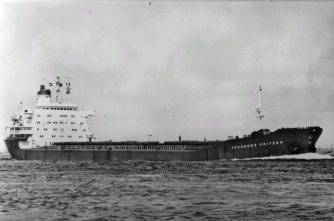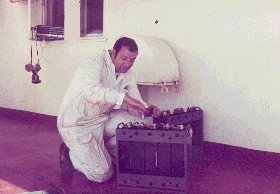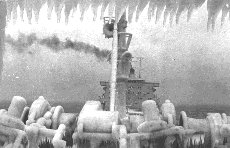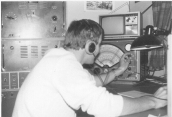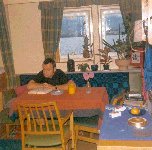
Cabin of „Johannes
Fritzen“. Typical for a ship of those years. |
|
An interesting thing for me as Radio
Officer was the so-called Narvik route. At that time many ore carriers
from the shipping firms of Frigga, Schulte und Bruns, and also Fritzen,
were regularly sent to Narvik, the Norwegen ore port. This port was
visited frequently, and mostly lead directly to the berth, but with bad
luck one must wait all day at the palisade. Mostly we travelled from
Rotterdam or Emden to Narvik. Shortly after leaving, the "Old Man"
(Captain) would come to the radio room and review the ship's radio traffic
for Narvik. The object was to determine if the ship should eventually
sail short of Narvik, if another ship was placed better to take the freight.
Sometimes it was possible to overtake another ship, then the Captain met
with the lead engineer, and we were hearing, "increase engine speed." |
